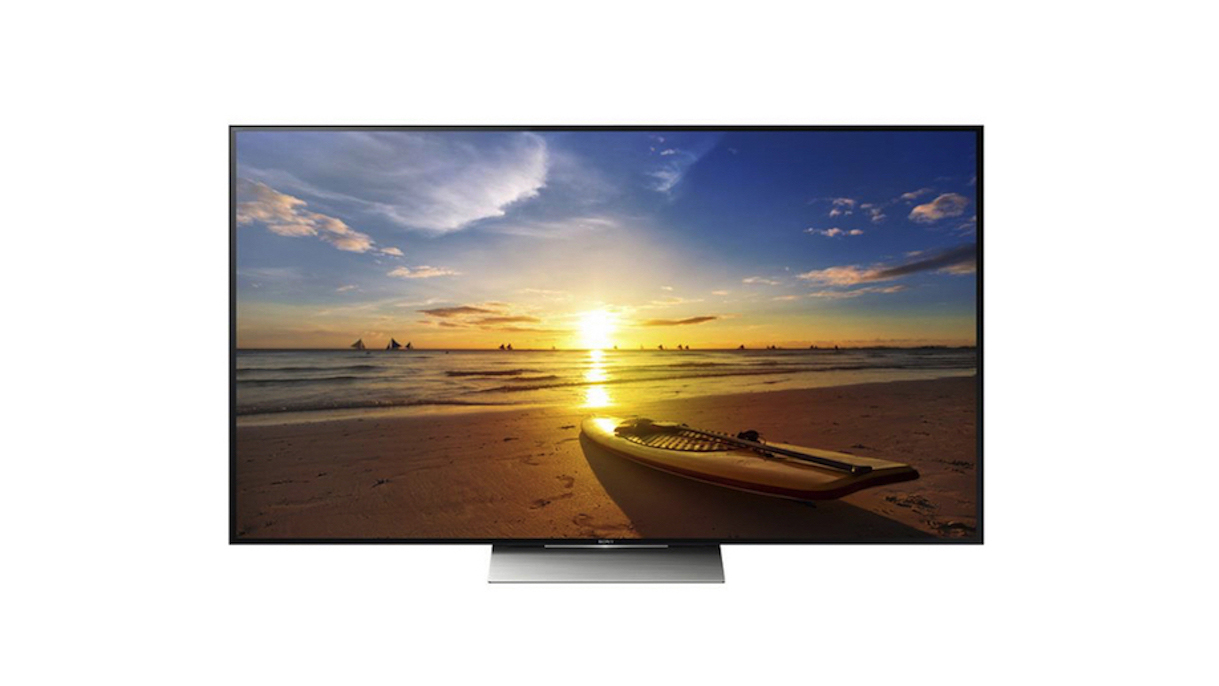Why you can trust TechRadar
While it remains to be seen if the Sony 75X940D will be the best TV of 2016 (I'm still waiting expectantly on the arrival of LG's new OLED TVs, plus Samsung's KS9500 direct LED flagships), its pictures certainly set a very high bar.
Feeding it the likes of The Revenant, Deadpool and Kingsman on Ultra HD Blu-ray – meaning the set is pushed to the limits of its abilities, with both HDR and 4K in play – the pictures it produces are, for the vast majority of the time, nothing short of jaw-droppingly good.
Their HDR success is down to a whole range of factors, as I'll explain, but there's one which stands out above the rest: the appearance of only minor light clouding around very bright objects when they appear against dark backdrops.
I mention this first because it's the distractions caused by less subtle light 'pollution' on this year's other HDR TVs to date that have pretty much single-handedly left me feeling a little disappointed with their HDR efforts.
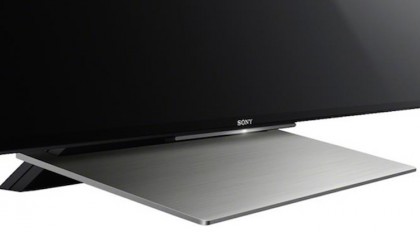
So while even the direct-lit, locally dimmed 75X940D can't deliver flawless light control with HDR, the fact that its patches of extraneous light are both fainter and less defined at their boundaries than those of other screens – including the Panasonic TX-65DX902 – means they're much less distracting on the rare occasions when they crop up.
The exceptional quality of other aspects of the 75X940D's HDR performance also makes it much easier to become lost in the film you're watching. For instance, despite the strong backlight control the screen delivers a massive luminance range between the brightest and darkest elements of its pictures, as well as pulling out even the tiniest of light differentials and shadow details between the eye-catching dark and light HDR extremes.
Colors, too, look sensational, as Sony's tried and tested Triluminos technology rises masterfully to the challenge of the wide color spectrums employed on all the Ultra HD Blu-ray discs I've seen so far.
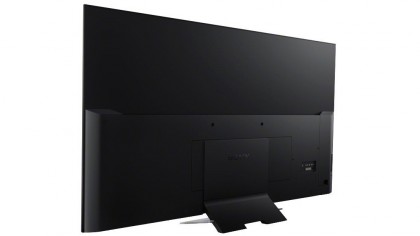
Hues across the color spectrum look incredibly punchy and vivid, yet thanks to the sophistication of Sony's color engine there's no hint of any colors looking unnaturally dominant over the rest. Also, the exceptional deftness the 75X940D shows when it comes to handling even the smallest tonal difference means there's no trace of color blocking or striping.
In fact, as I've noticed with numerous other Sony 4K TVs, the color finesse is such that it actually exaggerates the sense of 4K detail in the image, helping the 75X940D produce some of the crispest, cleanest 4K images I've ever seen – especially as the 'Clear' setting of Sony's Motionflow processing keeps movement in the frame looking detailed and free of blurring, without making the action look so slick that it becomes unnatural.
The size of the 75X940D's screen doesn't do it any harm when it comes to delivering the maximum impact from native 4K material either, and this largesse also comes in handy when you're watching 3D; after all, 3D is always more convincing when the image fills your field of view, rather than looking like some strange little 3D hole cut into your living room wall.
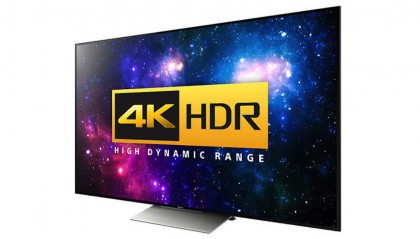
The screen's exceptional contrast, brightness and color performance boost its 3D performance too, keeping the action looking vivid and bright even when you're wearing the active shutter glasses.
The combination of contrast and rich colors additionally helps 3D worlds look more solid and impressive in scale, leaving as the only 3D issues some noticeable ghosting noise around heavily foregrounded or backgrounded objects, and a softer picture finish than you get with upscaled HD or native 4K 2D images (don't forget that 3D isn't part of the Ultra HD Blu-ray specification, so it's currently HD only).
As with previous high-end Sony 4K TVs, the 75X940D does a pretty much exemplary job of upscaling HD sources to its native 4K pixel count. It manages to add a sense of increased detail and clarity to HD sources without exaggerating any grain or MPEG compression noise the source might contain, and without causing other processing issues like blurring or lag.
Even the HD source's colors get an apparent boost in tonal resolution, as Sony's processing works out with uncanny cleverness the tones of all the new pixels it needs to create between the existing 'real' ones.
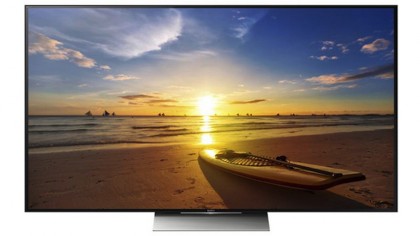
The 75X940D is spectacularly less watchable with standard definition sources, it must be said. But really, what did you expect considering how unforgivingly huge the screen is, and how many pixels the processing is having to conjure up?
One last important picture point to cover is how well the 75X940D handles non-HDR sources; after all, aside from a handful of shows on Netflix and Amazon, plus Ultra HD Blu-ray discs, everything else you'll watch on the 75X940D will use the old standard dynamic range (SDR) luminance and color levels we've been used to for decades.
Happily the 75X940D adapts its performance to SDR's less demanding world pretty much perfectly, retaining its flare for color and detail while also delivering an even better black level performance that remains free of almost all traces of unwanted clouding issues as a result of not having to try to deliver HDR's vastly more demanding brightness peaks.
Usability
This is not a strong point for the 75X940D, for two reasons. First, Android TV continues to be the least friendly of all the main smart TV interfaces thanks to its cumbersome full-screen, multi-shelved menu approach, its inability to learn in any significant way the sort of content you like to watch, and its failure to provide much in the way of user customization.
The sheer number of apps available is pretty overwhelming too, despite the vast majority of those apps being of niche interest to typical TV users to say the least.
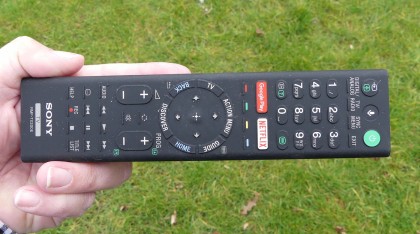
The other usability issue concerns the 75X940D's remote control. Sony has decided to make all of its buttons sit almost flush with its bodywork, a decision which creates a cool look and feel, but which makes the remote almost unusable, as your fingers don't have any frame of reference to help you find your way around – and Sony has compounded the problem by grouping too many of the important buttons in a confusing layout in a fairly small area of the remote's upper half.
I lost count of the number of times I accidentally hit the wrong button, and can't think of any other remote design that's come so close, so often, to being hurled at the test room wall.
Sound quality
The 75X940D doesn't benefit from the huge, ultra-powerful magnetic fluid speakers that made such a design statement on its predecessor, so not surprisingly it doesn't sound anywhere near as good. There's far less bass extension, and the sound appears slightly muffled and indirect because the 75X940D's speakers no longer fire directly forwards. The soundstage is smaller too, and treble details sometimes sound a touch harsh.
Considered alongside more typical flat TV competition, though, the 75X940D actually holds up reasonably well. Its slightly larger bodywork helps it deliver a more rounded sound than Sony's step-down X930D models for 2016 (even though the speaker power arrangement appears to be the same), and it also seems able to go a little louder before starting to sound harsh, although I'd say Samsung's KS9000 models still sound slightly richer.
John has been writing about home entertainment technology for more than two decades - an especially impressive feat considering he still claims to only be 35 years old (yeah, right). In that time he’s reviewed hundreds if not thousands of TVs, projectors and speakers, and spent frankly far too long sitting by himself in a dark room.
